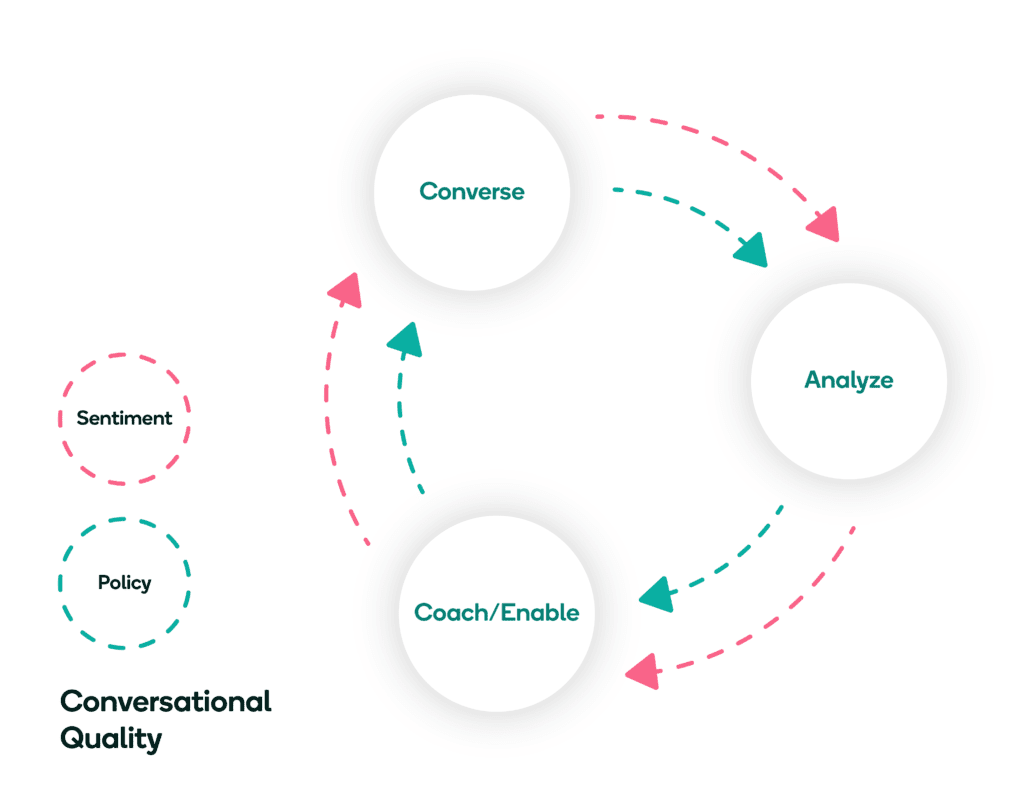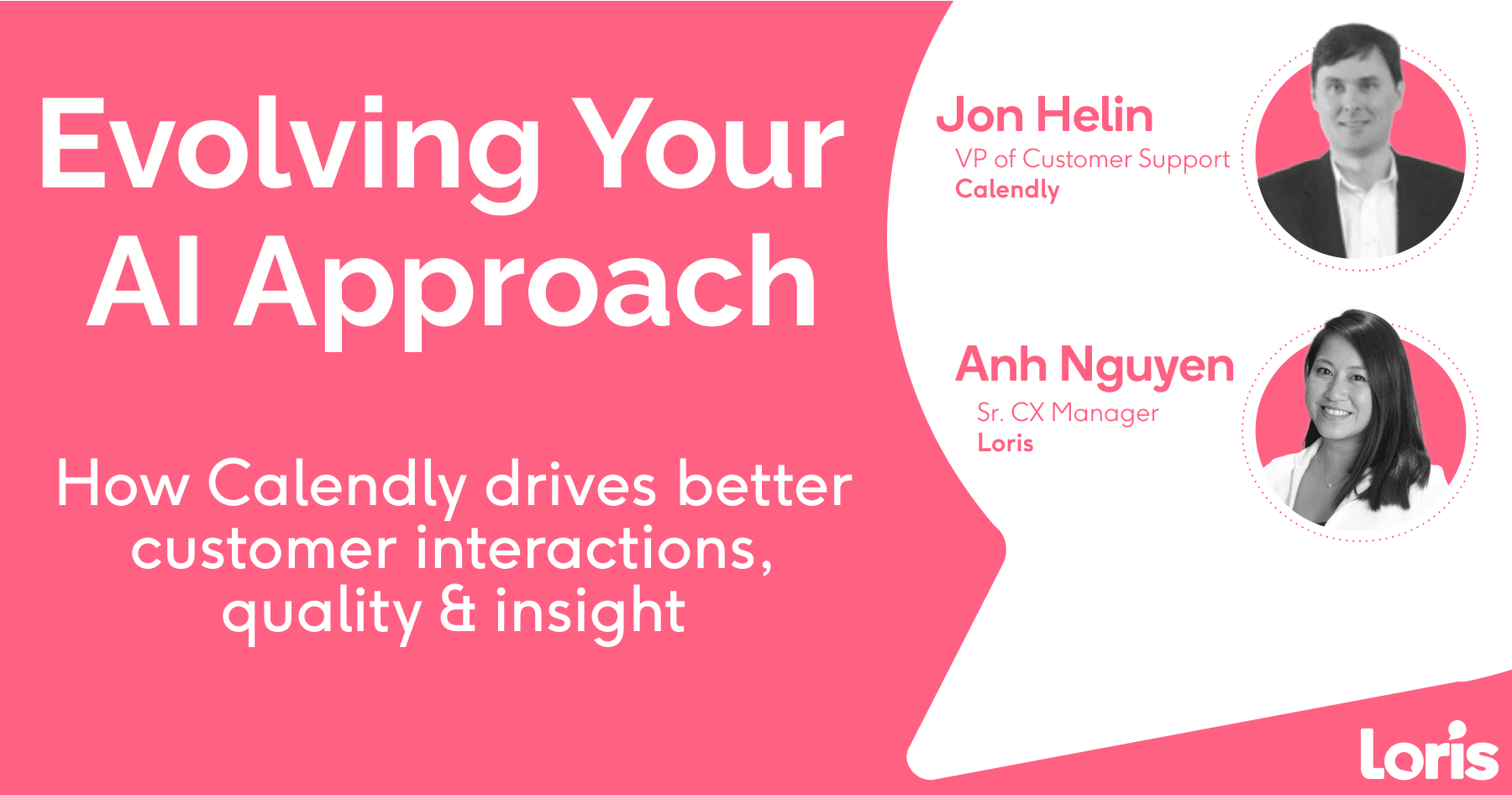The Current State of CX
For any organization to grow, they need to secure their base…and the base is built on loyal customers that produce long term value and predictability. Customers are more likely to be loyal to companies that deliver excellent service, and Quality – whether a company has dedicated resources for it or not – is at the heart of positive customer experiences.
When there are inconsistent customer experiences (usually due to a lack of clear process and guidance to those who are at the first line of communication), then there’s great risk to the organization’s growth and brand reputation. Additionally, without institutionalizing the knowledge, there is a risk of losing what worked and didn’t – especially in a department with high employee turnover, such as CS.
Therefore, it is imperative that frontline agents, and others who are accountable for customer service and experience, are provided with the right tools and messages so they can have the right conversation, at the right time, for any situation they confront.
However, most organizations do not have the right infrastructure in place to adequately enable the conversations and understand which agents are performing well & which ones need coaching. This is not the fault of existing CX and QA teams. They are lacking the necessary resources and tools for this business-critical area.
Enter Conversational Quality (CQ).
Elevating QA
Before we can explore CQ, we need to reimagine the role and importance of QA, not just in the CX team, but the organization as a whole. Quality should be looked at as more than the auditor of customer conversations and manager of the QA scorecard.
When operating at the top of their license, the Quality function can discover the agent behaviors that lead to desired outcomes with customers, and those that do not. They can develop strategies to replicate that success and turn a team of agents performing at various levels into a high-performing team of “A” players.
They can also be the first line of defense for organizations to uncover where other potential issues may be originating, such as shipping issues (3rd party vendors), product failures (Engineering + Production), and promo confusions (Marketing). By reviewing conversations for quality, the CS QA function can surface trends and quickly provide relevant examples to other areas of the business to act on.
The Quality function should be seen as a key driver for successful growth and a critical factor in strengthening the organization’s existing customer base. In truth, they’re likely doing this today already, but for this to happen at scale, you need to implement a system for success. This is Conversational Quality.
What is Conversational Quality
Conversational Quality (CQ) is the continuous improvement cycle that enables you to replicate what is working across all of your organization’s customer conversations. It is the process of building the infrastructure to enable all agents to respond with the right message, at the right time, for any conversation they face.
While simple in theory, building a process of continuous improvement and learning takes time and most importantly access to conversational data analytics. Both of which are in short supply for most teams today.
To better visualize the process we have created the Conversational Quality Cycle:

Analyze
Today, this is a challenge for most organizations. The sheer volume of interactions makes it nearly impossible to look through each and every one to learn what’s working and what’s not. Additionally, the learnings are almost always focused on individual agents, based on the small sample of conversations reviewed.
Another flaw in the existing process is that there is too much emphasis on the inputs by which the agents are measured, vs the outcomes they produce.
What does this mean?
In traditional QA today, reviewers use a checklist of questions to assess the quality of agents’ interactions – e.g. “Was the customer greeted by name?” or “Were there any spelling mistakes?”. While these are critical, oftentimes they are created based primarily on the organization’s perception of how the customer wants to be engaged, rather than data-driven hypotheses.
However, if an agent was measured on the specific outcome of “Did the customer leave happier than when they came in?”, then we can better understand what a successful interaction looks like, and create coaching around that. This is what QA teams should be focused on when determining whether an agent is effective in their role.
To be able to do this, an organization must have the ability to analyze the majority of the conversations being had with their front line team, and know the sentiment of the customer at the start and at the end of the interaction. They must also be able to understand the customer’s intent for reaching out in the first place. When Quality teams can see this information over all conversations, they can identify trends in both customer requests and agent behaviors, and therefore define the processes that will produce the desired results.
Coach
Right now, the emphasis is on grading the individual agents’ conversations for policy adherence, but the focus should be moved to coaching vs simply grading.
Of course, it’s still important to understand how the agent is performing relative to a number (their quality score), but it is more critical to the success of the business to take insights and create coaching moments from them. To do this effectively, you must ensure that you’re coaching towards the desired outcomes identified in the Analyze stage of the CQ process.
In addition, you need to have visibility into every single conversation in order to truly identify what to focus on when coaching agents. By having this, you can discover the specific ways to manage a conversation so that it’s more likely to result in an outcome that leaves the customer more satisfied than when they entered. Those moments are the ones to learn from and coach with. In having 100% insight, you might also find that existing policies are actually not the best way to come to an optimal outcome.
What you are looking for is:
- Did certain resolution types work in saving the customer?
- Did things like additional empathy work to turn a potentially bad customer experience into a positive one?
By learning valuable lessons from every conversation, you can create processes that every agent can benefit from learning. You can then measure agents’ ability to follow these processes, which allows you to create a benchmark for success that’s based on measurable outcomes. By knowing where individual agents sit against this benchmark and developing coaching programs to elevate those that sit under the threshold, you can create a team of more “A” players.
Enable
At this point in the CQ cycle, you’ve learned what a successful conversation looks like based on business outcomes. You’ve identified and measured your policy adherence benchmark for ideal agent behavior, and have created coaching to prepare all of your agents to succeed, if they follow the process. But how do you ensure what was discussed carries through to the customer conversation? You develop an enablement process.
Of all the areas of the cycle, this one can present the greatest challenge. You need to be able to ensure that what was coached can also be retained in the moment. To do this successfully, you might create a searchable repository.
Your agents are busy multitasking and even the best agents will need real-time guidance when it comes to certain conversations. Without creating real-time access to shared knowledge there is a risk that the conversation may take longer to resolve, or potentially that the wrong message is conveyed.
Converse
It all begins and ends with the agent interaction with the customer. Too often, agents are left to fend for themselves when managing multiple complex conversations at once. Managers’ inability to provide real-time guidance is a challenge that leaves most agents searching through notes and other unstructured content, in the hopes that they can match the right customer request with the current company answer, all while bouncing through multiple interactions.
It’s a difficult task for anyone to manage and it only increases as the business grows, since with growth comes higher complexity of customer issues and volume of interactions.
To solve for this, organizations need to enable the agent to respond to a variety of questions and complaints quickly & accurately. They need to capture the golden nuggets of successful conversations and operationalize them in a way that easily puts it in every agent’s hand – organizations commonly turn to a searchable knowledge base for this.
Even better yet is the ability to serve real-time recommendations directly to agents in the moment. Artificial Intelligence tools are ideal for enabling this because they remove the need for searching, which in turn ensures that the right message is being delivered, and is being delivered faster.
Be a part of the solution
For a limited time Loris is looking to add a small number of design partners for the next phase of our QA solution. To learn more, please email us here.

